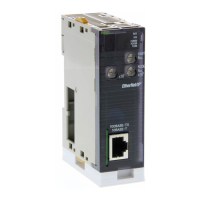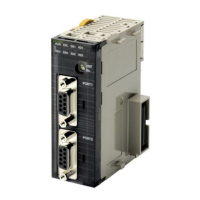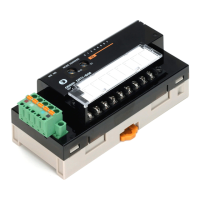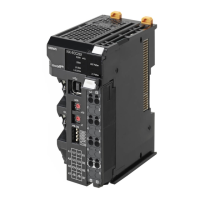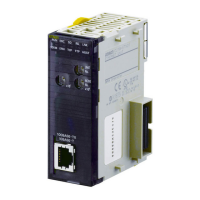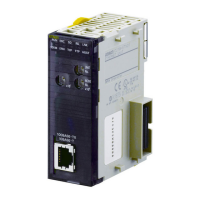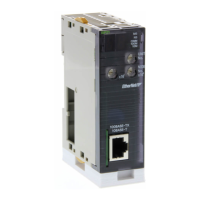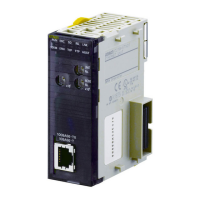295
Changes from Previous Products Section 9-5
When a response is not required from the host computer, the Communica-
tions Port Enabled Flag will turn ON when the command to the host computer
has passed from the CPU Unit to the port.
9-4-5 Reception Buffers
In Modbus-RTU Slave mode, each port has a reception buffer of 1,200 bytes.
This is sufficient to hold the maximum Modbus-RTU Slave frame length for an
FA command response frame (1,115 bytes) + 85 bytes. If a frame larger than
1,200 bytes is sent from the host computer (from @ to the carriage return),
the frame will be discarded and no response will be returned.
9-4-6 Error Responses
When Modbus-RTU Slave FA commands are used for FINS commands, an
error code will returned as the end code in the FINS response whenever there
is a mistake in the FINS command settings or an FINS response is required
that is too long for the legal response frame.
An end code of 110B Hex is returned when the response exceeds the maxi-
mum response length. The Modbus-RTU Slave response frame will contain
the requested read data after the end code through the end of the maximum
legal response frame length.
Note We recommend programming retry processing at any device sending com-
mands in case noise or other factors result in transmission errors.
9-5 Changes from Previous Products
There are differences between Modbus-RTU Slave Systems created using
the CS/CJ-series Serial Communications Boards and Unit in comparison to
Modbus-RTU Slave Systems created with Modbus-RTU Slave Units and CPU
Units in other PLC product series. These differences are described in this
sections.
9-5-1 RS-232C Ports
Take the following differences into consideration when changing from an exist-
ing Modbus-RTU Slave System to one using an RS-232C port on a CS/CJ-
series CPU Unit, Serial Communications Boards, or Serial Communications

